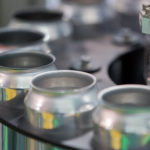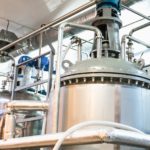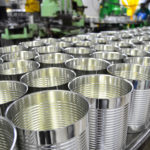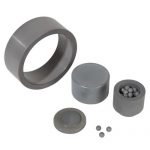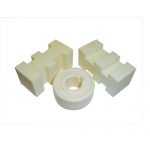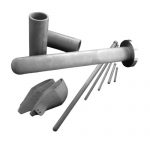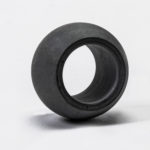Technical ceramics often conjure impressions of heavy-duty industry, chemical processing, or aerospace and defence applications. But the odds are likely that you have several commodities in your kitchen that have been formed using specialised ceramic components. We are referring to food and beverage cans.
Continue readingNew Apprentices Begin Training
International Syalons (Newcastle) Ltd. is proud to announce that two new apprentices have begun their Advanced Modern Apprenticeships alongside Tyne Metropolitan College.
Technical Ceramic Sensors: Properties & Applications
Rightly so, technical ceramics are commonly associated with harsh chemical processing, extremely high-temperature environments, and heavy-duty industry, however, in recent years, they have been increasingly employed in precision sensor applications.
Continue readingMetal Forming with Technical Ceramics: Food & Beverage Cans
Metal forming, like most of the metalworking and manufacturing chain, can be an extremely intensive process. It exploits the inherent plasticity of sheet metal to form net and near-net shapes via applied mechanical loads rather than gradual subtraction (cutting, grinding, etc.).
Continue readingSelecting the Right Milling Media: Technical Ceramics or Steel?
The grinding process is an age-old method that hasn’t changed much with time. Whether you are dealing with feed grinding or surface grinding, the same basic principles apply. Hard abrasive media is used to grind material down to finer consistencies, or to remove material for an optimal surface finish. This applies whether you are looking to achieve the ideal particle size for specific analytical methods or to prepare homogenous powders for further downstream processing.
Could 3D Printing Advanced Ceramic Materials Accelerate Vaccine Development?
Various agencies around the world have long highlighted a potential pandemic as one of the greatest threats to global health. Before the outbreak of severe acute respiratory syndrome (SARS-COV) in 2002, institutions like the Centre for Disease Control (CDC) developed various models for influenza pandemic planning. These models extol the importance of social distancing in buying time for immunologists to develop an effective vaccine. However, the conventional timeline for vaccine development and testing can be torturously slow.
Continue readingOxide Technical Ceramics: Alumina & Zirconia
Technical ceramics are an advanced class of materials primarily used in tough mechanical engineering applications and environments associated with refractory temperatures or harsh corrosive conditions. Characterised by remarkable thermomechanical properties and wide-ranging resistance to common alkalis, acids, and harsher corrosive agents, fine ceramic materials are used to satisfy some of the most stringent operating objectives in modern industry.Continue reading
Using Sialons in Aluminium Handling and Smelting
Updated: Originally published on 31/05/2018
Aluminium is one of the most readily-consumed metals on the planet, with production of alloys based predominantly on aluminium topping an average 64 million tonnes per annum. This excludes the growing volume of secondary, or recycled, aluminium which is estimated at a yearly 12 million tonnes. Despite the metal’s ubiquity, there are difficulties associated with aluminium handling and processing, which necessitate advanced material solutions.
Continue readingCOVID-19 Notice
International Syalons (Newcastle) Ltd. continue to operate fully during the COVID-19 outbreak.
Continue readingNon-Oxide Technical Ceramics: Sialons & SiC
Technical ceramics are among the most advantageous engineering materials ever developed, characterized by a diverse range of chemical, electrical, and thermomechanical properties. From hard-wearing silicon carbide (SiC) armour plates to piezoelectric zinc oxide (ZnO), components based on fine ceramic materials have permeated a broad range of market sectors. This far-reaching applicability stems from the compositional variety of ceramic compositions.
Continue reading
